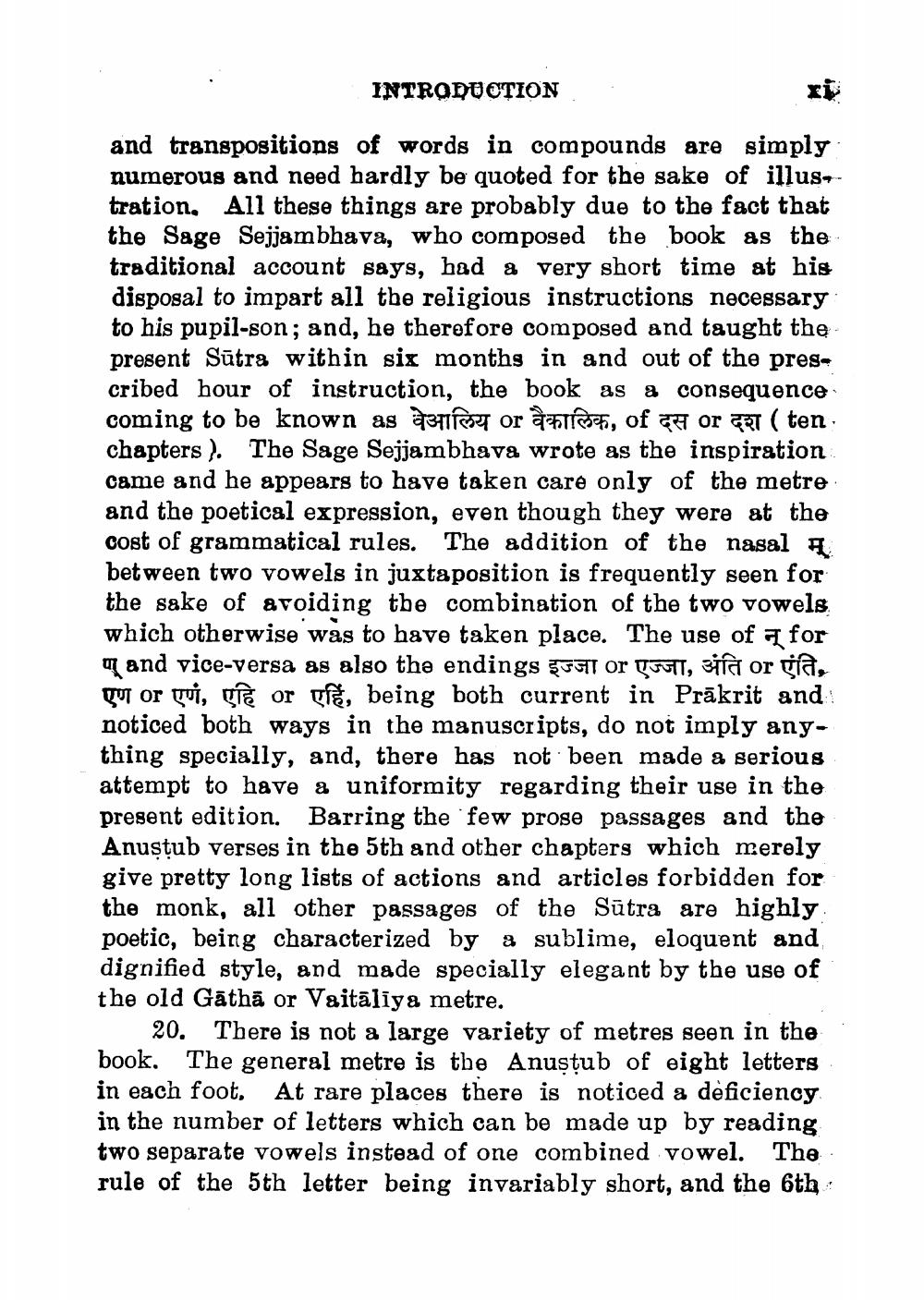________________
INTRODUCTION
and transpositions of words in compounds are simply numerous and need hardly be quoted for the sake of illus tration. All these things are probably due to the fact that the Sage Sejjambhava, who composed the book as the traditional account says, had a very short time at his disposal to impart all the religious instructions necessary to his pupil-son; and, he therefore composed and taught the present Sutra within six months in and out of the prescribed hour of instruction, the book as a consequence coming to be known as वेआलिय or वैकालिक, of दस or दश ( ten. chapters). The Sage Sejjambhava wrote as the inspiration came and he appears to have taken care only of the metre and the poetical expression, even though they were at the cost of grammatical rules. The addition of the nasal between two vowels in juxtaposition is frequently seen for the sake of avoiding the combination of the two vowels which otherwise was to have taken place. The use of for and vice versa as also the endings इज्जा or एज्जा, अंति or एंति,
or एणं, एहि or एहिं, being both current in_Prākrit_and! noticed both ways in the manuscripts, do not imply anything specially, and, there has not been made a serious attempt to have a uniformity regarding their use in the present edition. Barring the few prose passages and the Anustub verses in the 5th and other chapters which merely give pretty long lists of actions and articles forbidden for the monk, all other passages of the Sūtra are highly poetic, being characterized by a sublime, eloquent and dignified style, and made specially elegant by the use of the old Gatha or Vaitaliya metre.
20. There is not a large variety of metres seen in the book. The general metre is the Anustub of eight letters in each foot, At rare places there is noticed a deficiency in the number of letters which can be made up by reading two separate vowels instead of one combined vowel. The rule of the 5th letter being invariably short, and the 6th




